
Last week the full Highland Council decided to approve the remaining three Glen Etive hydro schemes (see here). It was clear during the debate that a number of Councillors voted for the proposals because they believed the impacts of construction could be mitigated and the landscape restored to close to its existing state.
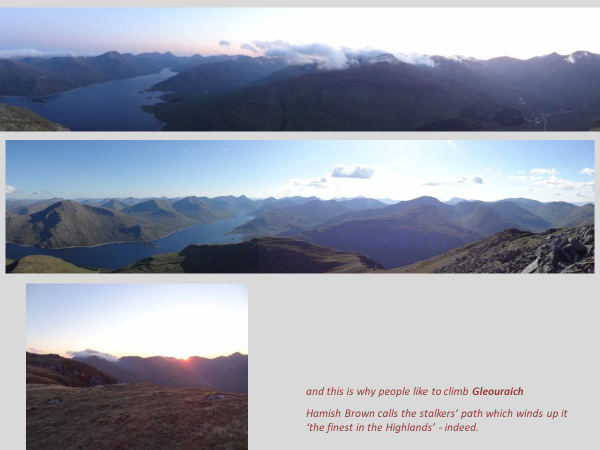
While that is occasionally the case, so far across Scotland its been the exception, not the rule. Partly as a result of poorly designed and conceived schemes and partly as a result of lack of enforcement by Planning Authorities, hydro developers have trashed many Highland Glens.
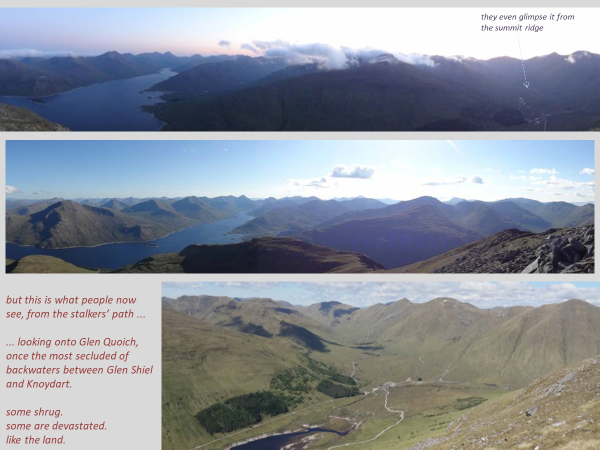
Those Councillors who get out into our hills now appreciate the damage that can be caused – and all credit to them. Other Councillors – or National Park Board Members – seem unaware of what is being done under their aegis.
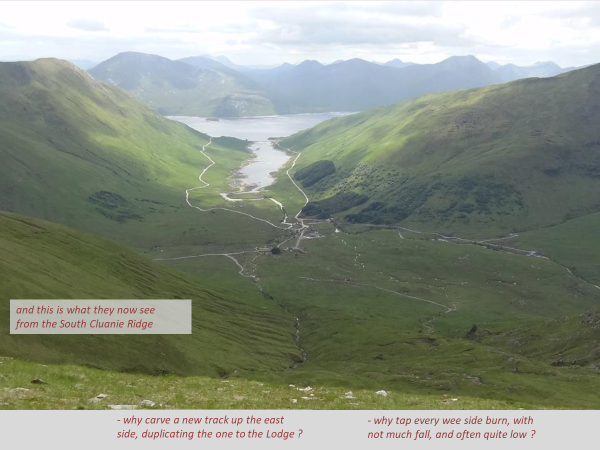
While Parkswatch has documented the extensive damage in our National Parks, it has generally refrained from covering other areas of Scotland – Glen Etive being the main exception. David Jarman, a former planner who has campaigned for Wild Land in Scotland, compiled slides on the impact of 13 schemes, good and bad, for Save Glen Etive.
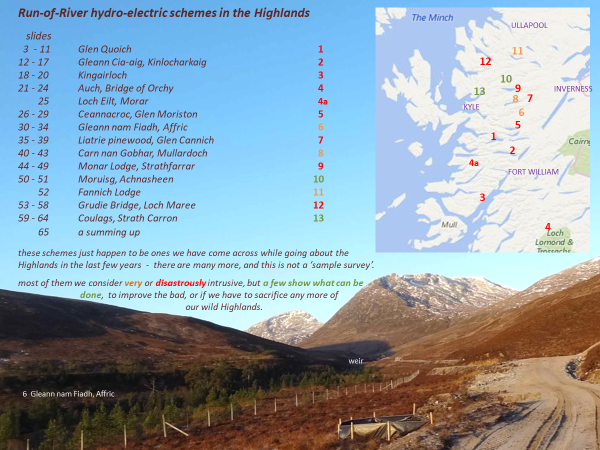
You can view the evidence from all David’s slides (here). With David’s permission, I thought it worth featuring the slides from the first two schemes on parkswatch.
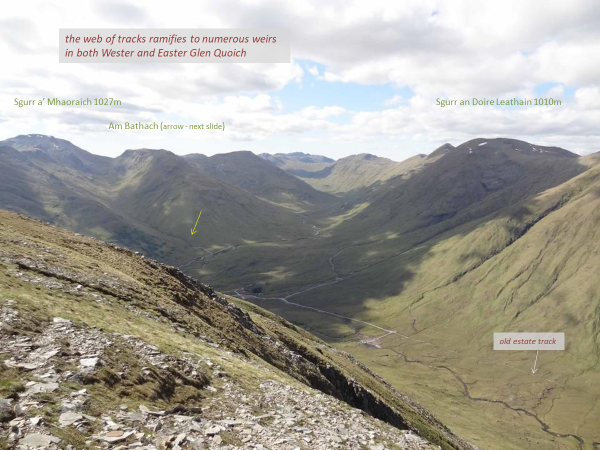
The Glen Quoich and Gleann Cia-aig schemes are, as the crow flies, the two closest to the Allt Mhuic scheme which Highland Council will consider tomorrow (see here). While the Allt Mhuic is much less well known than Glen Etive, it too flows from an area of Wild Land and the Highland South Planning Committee gave considerable attention to the mitigation proposals before rejecting it (see here).
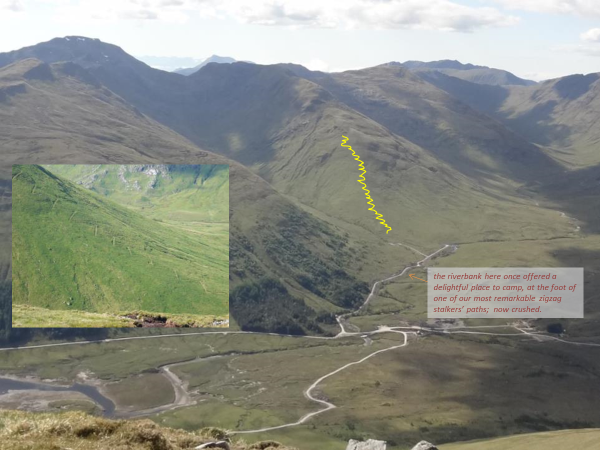
The concerns of the Highland South Planning Committee were based on local knowledge of what had happened with other hydro schemes hereabouts, including Gleann Cia-aig (see below). I hope that all councillors and all members of National Parks now make it their business to understand what has been happening across the Highlands.
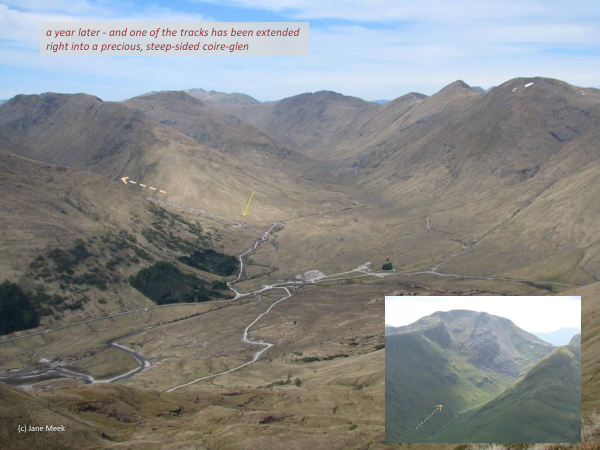
More often than not, the impact has been disastrous and the attempts at mitigation not worthy of that description. That was why all Councillors at the South Planning Committee which considered the Allt Mhuic were agreed that the proposed mitigation measures needed to be strengthened.

After the Etive decision, there is a risk now that the full Council will adopt a lower standard of mitigation than the South Planning Committee adopted for the Allt Mhuic before rejecting it (improved powerhouse design and tracks narrowed to 1.8m). That would be a disastrous step backwards. I hope Highland Council do the right thing and that, if they decide to approve the Allt Mhuic, they insist on the highest standards possible.
I will leave David Jarman’s slides of Gleann Cia-aig, which is almost next door in geographical terms, to speak for themselves.
Gleann Cia-aig hydro scheme
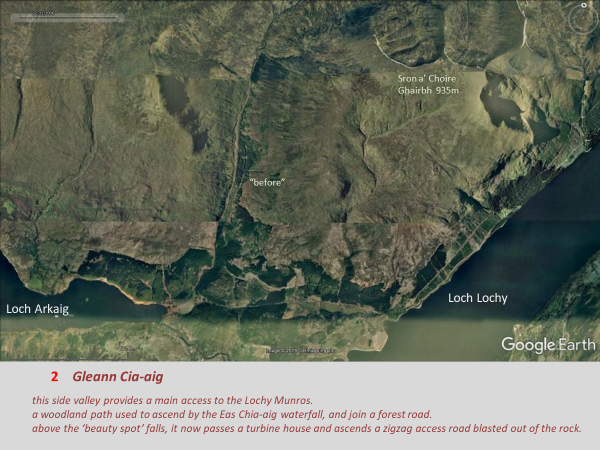
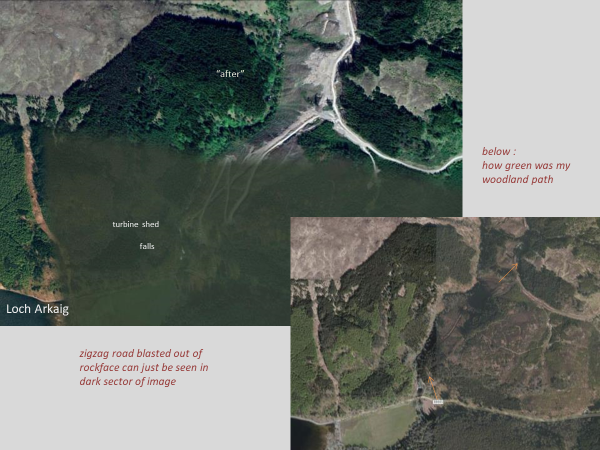
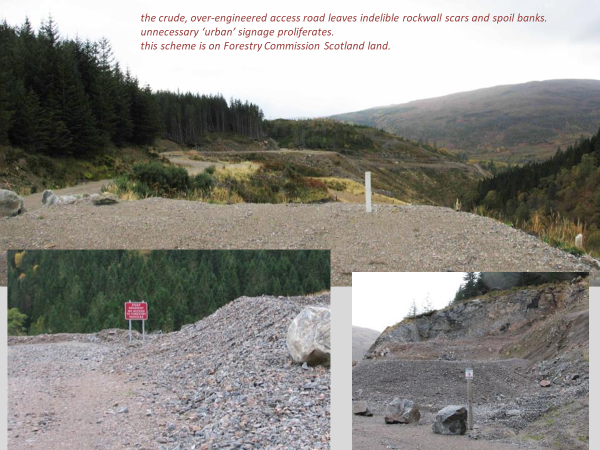
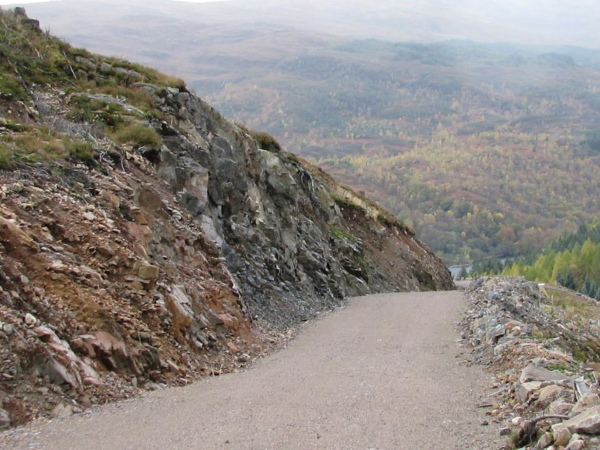
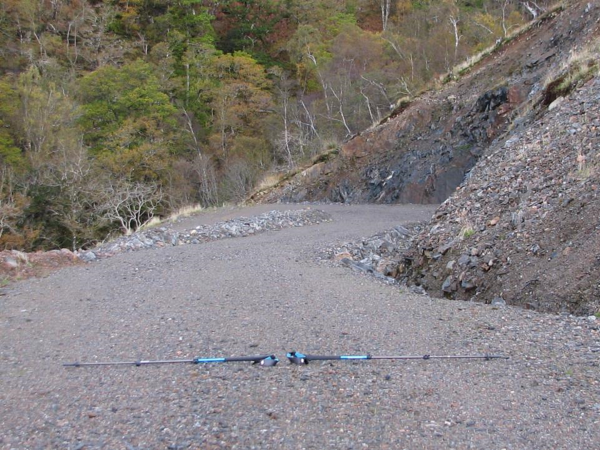
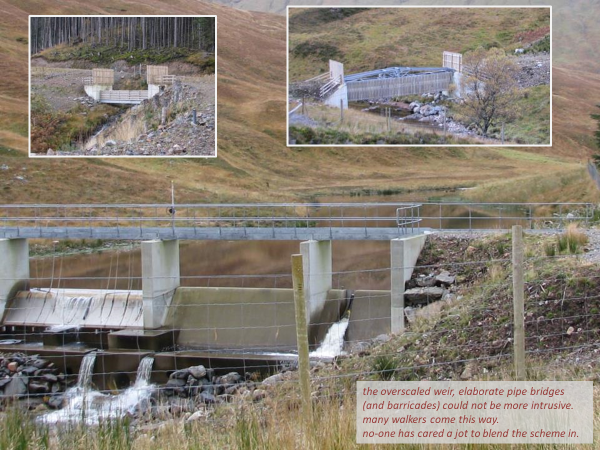

Here is a copy of a letter I sent to the Glasgow Herald about Glen Etive. Don’t expect them to print. Keep up the good work. These run of river schemes are worse than windfarms in that they have convinced a lot of fence sitters that they are actually OK in an environmental sense. As I say, very soon we will have no rivers running free in Highland Scotland. RW
Sir
In reference to your story of March 24 on the proposed hydro scheme development in Glen Etive, Community Councillor Victoria Sutherland has just as much a responsibility to protect God-given wild land as urban dwellers such as myself. The problem is that the concept of wild land is completely alien to the average person, even those who live among it. Taking councillors to the scene of this putative vandalism would therefore have done absolutely no good whatsoever. How many hours spent on a windswept hill? Time tracking a pristine burn roaring with life? The spirituality of clean, untrammelled, free running water, silver over hard washed rock, is known only to those who make the effort to learn about it. It is a great paradox that Highland councillors understand less about the hallowed turf they should be protecting than the thousands of urbanites who appreciate the gift of wild places. We have seen the same vandalism in Glen Falloch – and this within a so-called Loch Lomond & Trossachs national park. The confident roaring Falloch has been reduced to a snivelling rivulet, just what we will have in Glen Etive in the near future unless something is done very quickly. Soon there will hardly be a river in Highland Scotland that runs free.
Robert Wallace
36 Mount Harriet Drive
Stepps
Glasgow G33 6DN